Types of textile fibers – list of textile fibers by its sources
A comprehensive textile fabric names by fiber sources
Fiber is a fine hair-like structure and is considered the raw materials of textiles. The fiber is extracted from various sources for commercial use. In addition to obtaining from animals, plants, and minerals, many of the fibers are artificially generated as well. Here is a list of most commonly used textile fibers.
Type of textile fibers can be broadly divided into natural fibers and man-made or chemical fibers. They can be further divided based on the source from where the fibers are obtained.
Fibers are commonly classified as follows (based on the source of the fibers):
| Natural Fibers | Manmade Fibers | |||||
|---|---|---|---|---|---|---|
| Animal Fibers | Plant Fibers | Natural Polymers | Synthetic Polymers | |||
| Hair | Secretion | Seed | Bast | Leaf | ||
|
|
|
|
|
|
|
Natural Fibers
Natural Fibres are nonsynthetic hair-like materials of continuous filaments come from natural growing sources – both plants and animals. Demand for textile fibers such as flax, hemp, jute, kenaf, sisal, and Sugarcane bagasse has increased due to the possibilities of blending with reinforced polymer materials and easy availability of natural fibers.
Animal Fibers
Animal textile fibers commercially used today are generally obtained from the mammals such as Sheep, Goat, Angora Rabbit, Lama, Alpaca, Vicuna, Guanaco, Camel, Yak, Northern American Buffalo, and Musk Ox. The fibers extracted from these animals greatly differ in terms of biological, chemical and physical features. The silk fiber is the only fiber obtained from an insect (secretion) – silkworm.
Animal Hair/Wool Fibers
-
Sheep Wool
![wool shearing]() Wool is the common name applied to the soft, curly fibers obtained chiefly from the fleece of domesticated sheep, and used extensively in textile manufacturing. Wool production from sheep is affected by nutrition, climate, and care.
Wool is the common name applied to the soft, curly fibers obtained chiefly from the fleece of domesticated sheep, and used extensively in textile manufacturing. Wool production from sheep is affected by nutrition, climate, and care.Sheep wool categorized by different breeds:
- Fine Wool
- Long Wool
- Double coated
Common Sheep Breeds:
- Border Leicester
- Cheviot
- Columbia
- Corriedale
- Debouillet
- Delaine-Merino
- Dorset
- Finnsheep
- Hampshire
- Lincoln
- Montadale
- Oxford
- Rambouillet
- Romney, Shropshire
-
Mohair Wool
![mohair-sheep]() Mohair is the fleece produced by Angora goats, generally refers to a silk-like pile fabric or yarn. Most notable for its high luster and sheen, mohair takes to dye exceptionally well and can be blended with other yarns to enhance the quality of the overall textile. The Angora goat is thought to originate from the mountains of Tibet, eventually migrating to Ankara, Turkey by the 16th Century.
Mohair is the fleece produced by Angora goats, generally refers to a silk-like pile fabric or yarn. Most notable for its high luster and sheen, mohair takes to dye exceptionally well and can be blended with other yarns to enhance the quality of the overall textile. The Angora goat is thought to originate from the mountains of Tibet, eventually migrating to Ankara, Turkey by the 16th Century. -
Alpaca Wool
![alpaca animal]() Alpaca wool is a soft, warmth, and lightweight fiber sheared from Alpaca, a member of the biological family of Camelidae, has loft and is well suited for knitted and crocheted products as well as woven applications. Alpaca fiber has brightness and crimp. The fiber is known for its fineness, luster, lightweight and insulating qualities.
Alpaca wool is a soft, warmth, and lightweight fiber sheared from Alpaca, a member of the biological family of Camelidae, has loft and is well suited for knitted and crocheted products as well as woven applications. Alpaca fiber has brightness and crimp. The fiber is known for its fineness, luster, lightweight and insulating qualities.Major Alpaca fiber sourcing camelids:
- The Huacaya
- The Suri
-
Angora Wool
![angora-goat]() Angora Wool is a soft keratinous textile material, produced by the long-haired Angora rabbit. Angora fiber is known to be well blended with lamb or sheep wool, primarily to make spinning easier, but also to improve the washing qualities and to increase versatility.
Angora Wool is a soft keratinous textile material, produced by the long-haired Angora rabbit. Angora fiber is known to be well blended with lamb or sheep wool, primarily to make spinning easier, but also to improve the washing qualities and to increase versatility.Major breeds of Angora rabbits :
- English
- French
- Giant
- Satin
-
Camel Hair
![camel]() Camel hair fibers belong to the class of specialty hair fibers with unique characteristics such as luster, softness, warmth, and natural color and sourced from Camels. Camel’s hair blended with wool, silk, and synthetic fibers are considered more valuable.
Camel hair fibers belong to the class of specialty hair fibers with unique characteristics such as luster, softness, warmth, and natural color and sourced from Camels. Camel’s hair blended with wool, silk, and synthetic fibers are considered more valuable.Major fiber sourcing camel varieties.
- Arabian ña
- Guanaco
- South America camelid
-
Cashmere Wool
![cashmere-goat]() Cashmere wool is obtained from the Cashmere Goat, which is native in Tibet and in Northern India. It has been sorted according to its natural color, white, gray or brown colors. The raw fiber must be de-haired to separate the fine soft cashmere from coarse and worthless hair.
Cashmere wool is obtained from the Cashmere Goat, which is native in Tibet and in Northern India. It has been sorted according to its natural color, white, gray or brown colors. The raw fiber must be de-haired to separate the fine soft cashmere from coarse and worthless hair. -
Llama Wool
![llama-goat]() Llamas, a kind of sheep, are native to areas of high altitude and relatively cool climate with low humidity of the South American Andes. The llama is a two-coated animal. Its fine, downy undercoat gives protection from cold and heat. Llamas do vary considerably in fleece length and thickness, so the importance and frequency of shearing will depend on the individual animal as well as climate.
Llamas, a kind of sheep, are native to areas of high altitude and relatively cool climate with low humidity of the South American Andes. The llama is a two-coated animal. Its fine, downy undercoat gives protection from cold and heat. Llamas do vary considerably in fleece length and thickness, so the importance and frequency of shearing will depend on the individual animal as well as climate. -
Qiviut Wool
![qiveut ox]()
Musk oxen belong to Bovidae family which includes bison, buffalo, antelope as well as domesticated sheep, cattle and goats. Qiviut fiber is long with a diameter of 12 – 18 microns which makes it even softer than average cashmere. Much warmer than wool, it is worn as an insulating layer in clothing because it wicks moisture from the body and doesn’t shrink or felt.
-
Chiengora Hair
![dog]() Any dog fiber with a staple longer than 2-3 inches can be used to make yarn, although longer fibers are easier to spin and make for more durable garments. Shorter fibers can be carded with silk or wool to be made into yarn. Dogs with particularly long hair and dual coats, like Samoyed or Great Pyrenees are best for fiber production.
Any dog fiber with a staple longer than 2-3 inches can be used to make yarn, although longer fibers are easier to spin and make for more durable garments. Shorter fibers can be carded with silk or wool to be made into yarn. Dogs with particularly long hair and dual coats, like Samoyed or Great Pyrenees are best for fiber production. -
Yak Wool
![yak]() Textile products made of yak wool is highly competitive with cashmere in terms of quality. Regarded as one of the remarkable domestic animals, yak thrives in cold climatic conditions that tower the highest elevations.
Textile products made of yak wool is highly competitive with cashmere in terms of quality. Regarded as one of the remarkable domestic animals, yak thrives in cold climatic conditions that tower the highest elevations.Yak varieties:
- Arhangai
- Bayanhongor
- Zavhan
- Uvurhangai
-
Vicuña Wool
![vicuna]() Vicuñas produce the finest animal fiber in the world. The vicuña is a South American Camelid belonging to the infra-order Tylopoda, and family Camelidae. Vicuñas are the only truly wild species that can be captured, sheared and re-released on a commercial basis. Vicuña has been protected by the International Convention for the Trade of Endangered Species (CITES) since 1973 and by the Vicuña Convention signed by Argentina, Bolivia, Chile, and Perú since 1979.
Vicuñas produce the finest animal fiber in the world. The vicuña is a South American Camelid belonging to the infra-order Tylopoda, and family Camelidae. Vicuñas are the only truly wild species that can be captured, sheared and re-released on a commercial basis. Vicuña has been protected by the International Convention for the Trade of Endangered Species (CITES) since 1973 and by the Vicuña Convention signed by Argentina, Bolivia, Chile, and Perú since 1979.
Animal Secretion Fibers
-
Silk Fiber
![silk cocoon]() Silk fibers are natural fibrous protein-based materials, spun by Lepidoptera larvae such as silkworms, spiders, scorpions, mites, and flies. Recently silk is preferred for biomedical, textile and biotechnology industries due to its unique non-toxicity, biocompatibility, and biodegradability properties.
Silk fibers are natural fibrous protein-based materials, spun by Lepidoptera larvae such as silkworms, spiders, scorpions, mites, and flies. Recently silk is preferred for biomedical, textile and biotechnology industries due to its unique non-toxicity, biocompatibility, and biodegradability properties.Silk is rightly called the queen of textiles for its luster, sensuousness, and glamour. The silk rival with the most advanced synthetic polymers, yet the production of silk does not require harsh processing conditions.



 Wool is the common name applied to the soft, curly fibers obtained chiefly from the fleece of domesticated sheep, and used extensively in textile manufacturing. Wool production from sheep is affected by nutrition, climate, and care.
Wool is the common name applied to the soft, curly fibers obtained chiefly from the fleece of domesticated sheep, and used extensively in textile manufacturing. Wool production from sheep is affected by nutrition, climate, and care.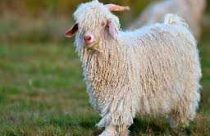 Mohair is the fleece produced by Angora goats, generally refers to a silk-like pile fabric or yarn. Most notable for its high luster and sheen, mohair takes to dye exceptionally well and can be blended with other yarns to enhance the quality of the overall textile. The Angora goat is thought to originate from the mountains of Tibet, eventually migrating to Ankara, Turkey by the 16th Century.
Mohair is the fleece produced by Angora goats, generally refers to a silk-like pile fabric or yarn. Most notable for its high luster and sheen, mohair takes to dye exceptionally well and can be blended with other yarns to enhance the quality of the overall textile. The Angora goat is thought to originate from the mountains of Tibet, eventually migrating to Ankara, Turkey by the 16th Century.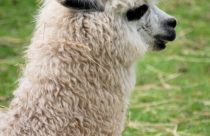 Alpaca wool is a soft, warmth, and lightweight fiber sheared from Alpaca, a member of the biological family of Camelidae, has loft and is well suited for knitted and crocheted products as well as woven applications. Alpaca fiber has brightness and crimp. The fiber is known for its fineness, luster, lightweight and insulating qualities.
Alpaca wool is a soft, warmth, and lightweight fiber sheared from Alpaca, a member of the biological family of Camelidae, has loft and is well suited for knitted and crocheted products as well as woven applications. Alpaca fiber has brightness and crimp. The fiber is known for its fineness, luster, lightweight and insulating qualities.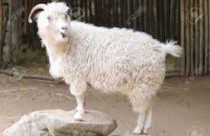 Angora Wool is a soft keratinous textile material, produced by the long-haired Angora rabbit. Angora fiber is known to be well blended with lamb or sheep wool, primarily to make spinning easier, but also to improve the washing qualities and to increase versatility.
Angora Wool is a soft keratinous textile material, produced by the long-haired Angora rabbit. Angora fiber is known to be well blended with lamb or sheep wool, primarily to make spinning easier, but also to improve the washing qualities and to increase versatility.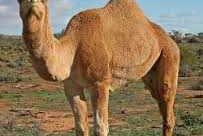 Camel hair fibers belong to the class of specialty hair fibers with unique characteristics such as luster, softness, warmth, and natural color and sourced from Camels. Camel’s hair blended with wool, silk, and synthetic fibers are considered more valuable.
Camel hair fibers belong to the class of specialty hair fibers with unique characteristics such as luster, softness, warmth, and natural color and sourced from Camels. Camel’s hair blended with wool, silk, and synthetic fibers are considered more valuable.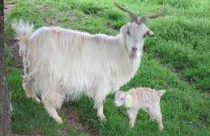 Cashmere wool is obtained from the Cashmere Goat, which is native in Tibet and in Northern India. It has been sorted according to its natural color, white, gray or brown colors. The raw fiber must be de-haired to separate the fine soft cashmere from coarse and worthless hair.
Cashmere wool is obtained from the Cashmere Goat, which is native in Tibet and in Northern India. It has been sorted according to its natural color, white, gray or brown colors. The raw fiber must be de-haired to separate the fine soft cashmere from coarse and worthless hair. Llamas, a kind of sheep, are native to areas of high altitude and relatively cool climate with low humidity of the South American Andes. The llama is a two-coated animal. Its fine, downy undercoat gives protection from cold and heat. Llamas do vary considerably in fleece length and thickness, so the importance and frequency of shearing will depend on the individual animal as well as climate.
Llamas, a kind of sheep, are native to areas of high altitude and relatively cool climate with low humidity of the South American Andes. The llama is a two-coated animal. Its fine, downy undercoat gives protection from cold and heat. Llamas do vary considerably in fleece length and thickness, so the importance and frequency of shearing will depend on the individual animal as well as climate.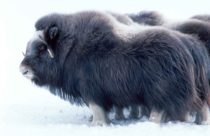
 Any dog fiber with a staple longer than 2-3 inches can be used to make yarn, although longer fibers are easier to spin and make for more durable garments. Shorter fibers can be carded with silk or wool to be made into yarn. Dogs with particularly long hair and dual coats, like Samoyed or Great Pyrenees are best for fiber production.
Any dog fiber with a staple longer than 2-3 inches can be used to make yarn, although longer fibers are easier to spin and make for more durable garments. Shorter fibers can be carded with silk or wool to be made into yarn. Dogs with particularly long hair and dual coats, like Samoyed or Great Pyrenees are best for fiber production.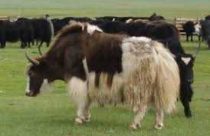 Textile products made of yak wool is highly competitive with cashmere in terms of quality. Regarded as one of the remarkable domestic animals, yak thrives in cold climatic conditions that tower the highest elevations.
Textile products made of yak wool is highly competitive with cashmere in terms of quality. Regarded as one of the remarkable domestic animals, yak thrives in cold climatic conditions that tower the highest elevations.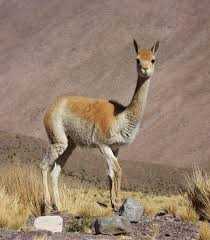 Vicuñas produce the finest animal fiber in the world. The vicuña is a South American Camelid belonging to the infra-order Tylopoda, and family Camelidae. Vicuñas are the only truly wild species that can be captured, sheared and re-released on a commercial basis. Vicuña has been protected by the International Convention for the Trade of Endangered Species (CITES) since 1973 and by the Vicuña Convention signed by Argentina, Bolivia, Chile, and Perú since 1979.
Vicuñas produce the finest animal fiber in the world. The vicuña is a South American Camelid belonging to the infra-order Tylopoda, and family Camelidae. Vicuñas are the only truly wild species that can be captured, sheared and re-released on a commercial basis. Vicuña has been protected by the International Convention for the Trade of Endangered Species (CITES) since 1973 and by the Vicuña Convention signed by Argentina, Bolivia, Chile, and Perú since 1979. Silk fibers are natural fibrous protein-based materials, spun by Lepidoptera larvae such as silkworms, spiders, scorpions, mites, and flies. Recently silk is preferred for biomedical, textile and biotechnology industries due to its unique non-toxicity, biocompatibility, and biodegradability properties.
Silk fibers are natural fibrous protein-based materials, spun by Lepidoptera larvae such as silkworms, spiders, scorpions, mites, and flies. Recently silk is preferred for biomedical, textile and biotechnology industries due to its unique non-toxicity, biocompatibility, and biodegradability properties.
Wow Thanks! This is super clear.
Wow, superb weblog structure! How lengthy have you ever been blogging for? you made blogging glance easy. The overall glance of your site is wonderful, let alone the content!